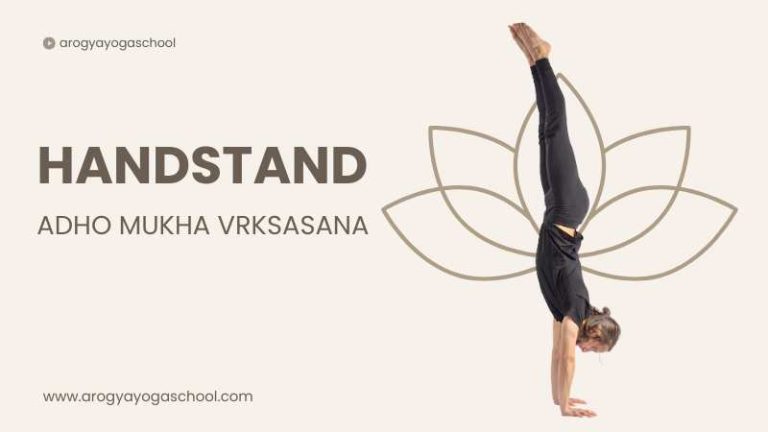
Parsvottanasana – Pyramid Pose
Pyramid Pose, known as Parsvottanasana in Sanskrit, is a profound forward bend that effectively stretches the hip muscles and hamstrings while elongating the spine. This pose requires a narrow stance, akin to standing on train tracks, encouraging you to consciously develop stability, strength, and integrity.
As you transition into this position, be cautious not to hyperextend your knees or round your back and shoulders. Focus on creating length from the crown of your head down to your tailbone. According to Natasha Rizopoulos, a yoga instructor and teacher trainer at the Down Under School of Yoga, finding equilibrium between freedom and stability is essential in Parsvottanasana.
The openness in your upper body as you extend your spine and broaden your shoulders is supported by a solid foundation and strong legs. While practicing this pose, welcome its contrasting elements; improving physical alignment can lead to an energetic balance as well.
Pyramid Pose Overview:
- Sanskrit Name: Parsvottanasana (pronounced parsh-voh-tahn-AHS-anna)
- Type: Forward Bend
- Alternate Name: Intense Side Stretch Pose
- Engish Name: Pyramid Pose
Parsvottanasana, also known as Pyramid Pose, is a standing forward bend in yoga that deeply stretches the hamstrings, fortifies the legs, and enhances both balance and concentration. Here’s how to practice Parsvottanasana:
How to do Parsvottanasana:
- Start in Tadasana (Mountain Pose): Stand upright with your feet together and arms relaxed at your sides.
- Step Back: Move your left foot back approximately 3 to 4 feet while keeping your hips aligned with the front. Position your right foot facing forward and angle your left foot slightly outward (around 45 degrees).
- Hands Position:
- Option 1: Bring your palms together behind you in a reverse prayer position.
- Option 2: If reverse prayer is difficult, clasp opposite elbows or rest your hands on your hips instead.
- Lengthen Your Spine: Inhale deeply, elongating the spine and creating space within the torso.
- Hinge at Hips: Exhale as you hinge forward from the hips, maintaining a straight back while leaning over your front leg. Try to bring your torso parallel to the floor or closer to it while preserving spinal length.
- Gaze Direction: Look towards your front foot or downwards, ensuring that your neck remains elongated and relaxed.
- Hold the Position: Remain in this pose for 5 to 10 breaths, savoring the stretch in both hamstrings and calves.
- Exit Safely: Inhale as you gradually stand up again, then bring your feet together before switching sides.
Benefits of Parsvottanasana Pyramid Pose:
- Stretches hamstrings, calves, and spine effectively.
- Strengthens both legs and core muscles.
- Enhances balance, posture, and mental focus.
- Fosters tranquility and self-reflection.
Tips:
- Keep hips squared toward the front; avoid allowing the back hip to rotate outward.
- If flexibility is an issue during the forward fold, consider using blocks under each hand for support.
- Activate leg muscles for improved balance and stability.
Would you like assistance with modifications or tips for overcoming specific challenges related to this pose?
FAQs about Parsvottanasana (Pyramid Pose)
1. What are the primary benefits of practicing Parsvottanasana?
Parsvottanasana stretches the hamstrings and calves, strengthens the legs and core, enhances balance and posture, and fosters mental focus and tranquility.
2. Is Parsvottanasana suitable for beginners?
Yes, beginners can practice this pose, but it’s important to listen to your body and make modifications as needed to ensure safety and comfort.
3. How can I modify Parsvottanasana if I have tight hamstrings?
If you have tight hamstrings, consider using yoga blocks under your hands for support or bend your front knee slightly during the forward fold to reduce strain.
4. Should I feel pain while practicing Parsvottanasana?
No, you should not feel pain in this pose. If you do, ease out of the position until you find a comfortable stretch without discomfort.
5. How long should I hold Parsvottanasana?
Aim to hold the position for 5 to 10 breaths, allowing time to savor the stretch and deepen your connection with your breath.
6. Can I practice Parsvottanasana if I have lower back issues?
If you have lower back issues, consult with a healthcare professional before practicing this pose, and consider modifications that keep your spine aligned and safe.
7. What should I focus on while in Parsvottanasana?
Focus on keeping your spine long while hinging from the hips, maintaining squared hips towards the front, and engaging your leg muscles for better stability.
8. How does breathing affect my practice of Parsvottanasana?
Breathing deeply helps create space within the torso as you lengthen your spine; exhaling encourages relaxation into the forward fold while maintaining control throughout the pose.







